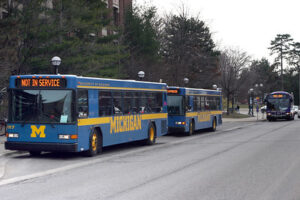Yesterday, I wrote about an opinion piece I recently read. The author indicated that higher education institutions needed to do a better job of recognizing when a merger with another school was in order. If survival is a goal for a community college or university, then there are three options: increasing enrollment, merging with another school, or closing.
Since 2015, more than 500 higher education institutions (or campuses) have closed permanently. In Michigan, since 1970, the number of institutional closures is 35. If Michigan’s colleges and universities cannot increase their enrollments, it seems only logical that more Michigan higher education institutions will find themselves on the closure list.
At obvious immediate risk are private, for-profit colleges and universities, as well as private, non-profit institutions with low enrollments. But these aren’t the only schools on the critical list. Regional public universities have lost a significant number of students since 2006. EMU currently operates at two-thirds of the enrollment it had at its peak in 2006. In fact, EMU’s enrollment decline is the third largest among Michigan’s 15 public four-year universities.
Michigan’s public universities lost 17% of their combined enrollment between 2006 and 2021. But that pales in comparison to Michigan’s community college enrollment losses. In the same timeframe, Michigan’s public two-year colleges lost 45% of their combined enrollment. The largest enrollment declines belong to Kellogg Community College in Battle Creek. KCC’s enrollment peaked in 2010. Since then, KCC has decreased in size by nearly two-thirds.
Battle Creek has lost major employers and is working through the Kellogg Corporation’s decision to split itself into three companies. The smallest company – cereal and plant-based foods operations – will remain in Battle Creek. The company’s corporate headquarters and its financially lucrative snack foods division will move to Chicago.
Community college needs a better value proposition
Having a public funding source does not guarantee stability. In 1996, Highland Park Community College closed amid severe budget problems. From a practical perspective, as enrollment declines, it becomes harder to run the classes students need to complete programs. Currently, KCC’s in-district tuition and fees are $158.25 per credit hour for most programs. Industrial Trades and Health Care instruction are $269.50 per credit hour.
Ever-rising tuition isn’t sustainable, but the process of merging a community college is complex. If a Michigan community college found a partner community college with which to merge, voters in both districts would have to approve the merger. According to Michigan law, the size of a community college Board of Trustees is limited to 7, so a merger would have to address the composition of the new board as well. In many ways, merging two community colleges is less practical and less likely than closure.
Right now, Michigan’s community colleges are operating at 55% of their capacity. So far, administrators (and legislators) have not found the magic recipe for increasing enrollment. As I have said in the past, increasing community college enrollment is a matter of money. It’s not about how much money the state or a locality puts into the facility. Rather, it’s about how much money a graduate can make in the job market. Until community college administrators get very serious about focusing on (and improving) their value proposition, community college enrollment will continue to decline.
Photo Credit: Thomas Hawk, via Flickr
.


















